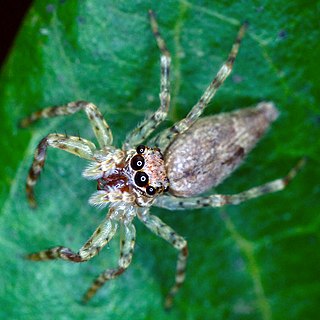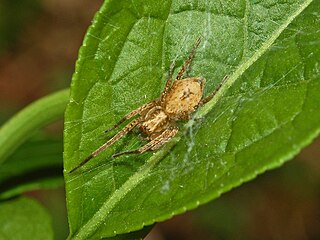
Spider-Man is a fictional superhero created by writer-editor Stan Lee and writer-artist Steve Ditko. He first appeared in the anthology comic book Amazing Fantasy #15 in the Silver Age of Comic Books. He appears in American comic books published by Marvel Comics, as well as in a number of movies, television shows, and video game adaptations set in the Marvel Universe. In the stories, Spider-Man is the alias of Peter Parker, an orphan raised by his Aunt May and Uncle Ben in New York City after his parents Richard and Mary Parker died in a plane crash. Lee and Ditko had the character deal with the struggles of adolescence and financial issues, and accompanied him with many supporting characters, such as J. Jonah Jameson, Harry Osborn, Max Modell, romantic interests Gwen Stacy and Mary Jane Watson, and foes such as Doctor Octopus, the Green Goblin and Venom. His origin story has him acquiring spider-related abilities after a bite from a radioactive spider; these include clinging to surfaces, superhuman strength and agility, and detecting danger with his "spider-sense." He then builds wrist-mounted "web-shooter" devices that shoot artificial spider-webbing of his own design.
Colaxes is a genus of jumping spiders that was first described by Eugène Louis Simon in 1900.

Helpis is a genus of the spider family Salticidae.
Paracyrba is a genus of jumping spiders found only in Malaysia. It contains only one species, Paracyrba wanlessi. Its microhabitat are the water-filled hollow internodes of decaying bamboo, where it preys for aquatic animals, especially mosquito larvae. P. wanlessi and Evarcha culicivora, a jumping spider, are the only two spiders that have been experimentally studied and considered a mosquito specialist. E. culicivora indirectly feeds vertebrate blood by preying female mosquitos that carry blood. In general only one specimen is found per occupied bamboo internode.

Phaeacius is a spider genus of the family Salticidae, found in sub-tropical China and between India and the Malay Peninsula, including Sri Lanka, Sumatra and the Philippines. Although other spiders can jump, salticids including Phaeacius have significantly better vision than other spiders, and their main eyes are more acute in daylight than a cat's and 10 times more acute than a dragonfly's. The main eyes focus accurately on an object at distances from approximately 2 centimetres (0.79 in) to infinity, and in practice can see up to about 75 centimetres (30 in). They do not spin webs.
Sobasina is a genus of jumping spiders that was first described by Eugène Louis Simon in 1898. These spiders look somewhat like ants, except for S. paradoxa, which looks more like a beetle.
Yaginumanis is a genus of East Asian jumping spiders that was first described by F. R. Wanless in 1984. As of September 2019 it contains three species, found in Japan and China: Y. cheni, Y. sexdentatus, and Y. wanlessi. It is named in honor of Japanese arachnologist Takeo Yaginuma, who described the type species in 1984.
Pacullidae is a family of araneomorph spiders first described by Eugène Simon in 1894. It was merged into Tetrablemmidae in 1958, then raised back to family status after a large phylogenetic study in 2017.
Sparbambus is a monotypic genus of Malaysian jumping spiders containing the single species, Sparbambus gombakensis. It was first described by J. X. Zhang, J. R. W. Woon & D. Q. Li in 2006, and is found only in Malaysia. They are similar to members of Wanlessia. The name is derived from the Indian bambu, referring to the habitat where the species was initially found. The prefix spar denotes that the genus is in the subfamily Spartaeinae. The species name refers to the type locality, the Ulu Gombak Field Studies Centre of the University of Malaya.

Anyphaena is a genus of anyphaenid sac spiders first described by Carl Jakob Sundevall in 1833.
Colaxes horton is a species of spider of the genus Colaxes. It is endemic to Sri Lanka. The species was first found from Horton Plains, hence its specific name.
Phaeacius wanlessi is a species of spider of the genus Phaeacius. It is native to Nepal and Sri Lanka.
Paculla is a genus of araneomorph spiders in the family Pacullidae that was first described by Eugène Louis Simon in 1887. Originally placed with the Tetrablemmidae, it was transferred to the Pacullidae after a 2017 genetic study.
Proevippa is a genus of spiders in the family Lycosidae. It was first described in 1903 by Purcell. As of 2017, it contains 11 African species.

Octonoba is a genus of Asian cribellate orb weavers first described in 1979 by Brent Opell. Members of this genus and those of Purumitra both have a large concave median apophysis and a conspicuous hematodocha. However, these spiders are generally much larger, with a carapace greater than 1.4 millimeters long, where those of Purumitra are usually less than 1 millimeter long.
Colaxes benjamini is a jumping spider species in the genus Colaxes that was first identified in 2013. It lives in South Africa.
Colaxes nitidiventris is a jumping spider species that lives in India. It was discovered by Eugène Simon in 1900 and is the type species for the genus Colaxes.
Fred R. Wanless was a British arachnologist. Active in the field especially in the seventies and eighties of the 20th century, he described several dozen taxa, in particular among the spiders of the Salticidae family. Wanless played a significant role in the British Arachnological Society being its member in 1969–1973, 1974–1976 and 1986–1989, and Meetings Secretary in 1973–1978. From 1973 to 1988 he described 137 new species and 13 new genera.




